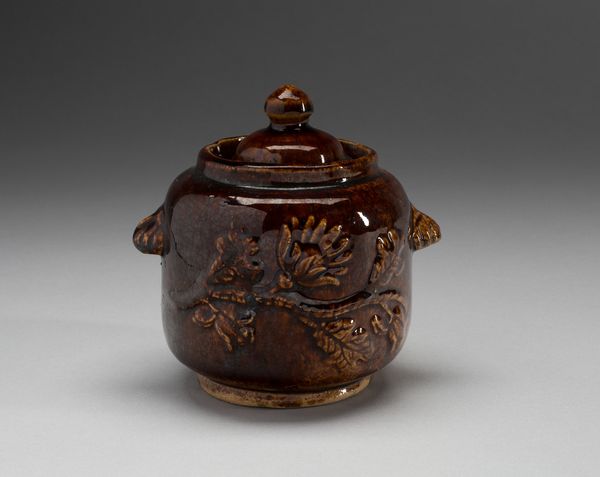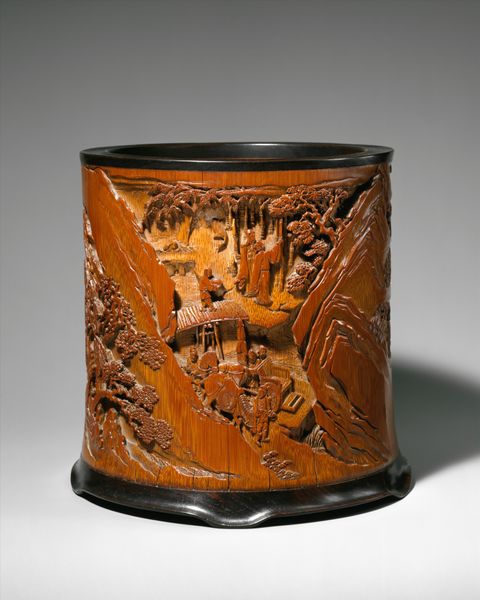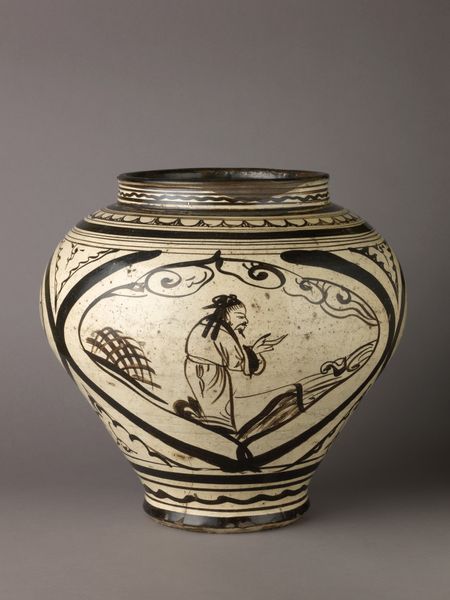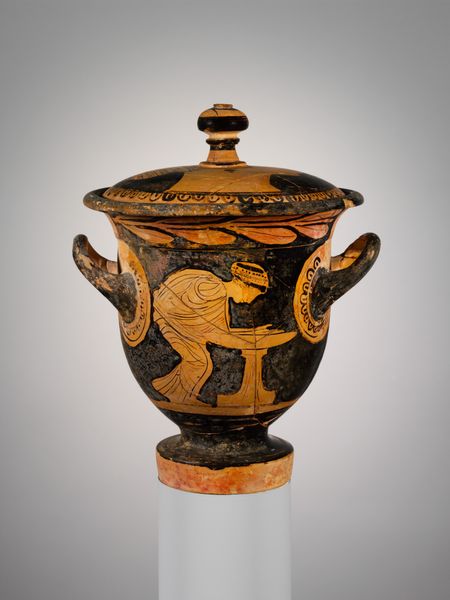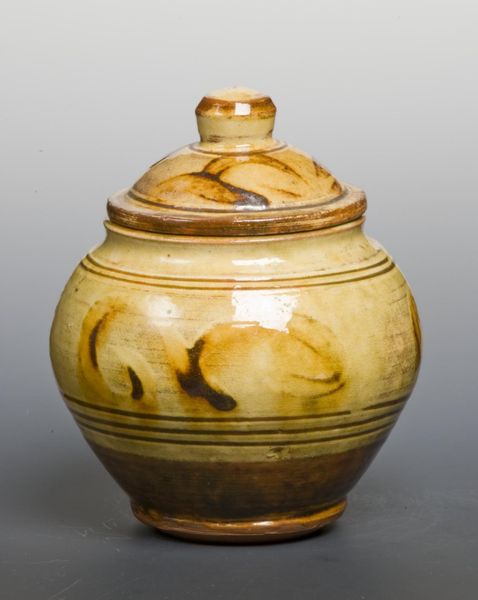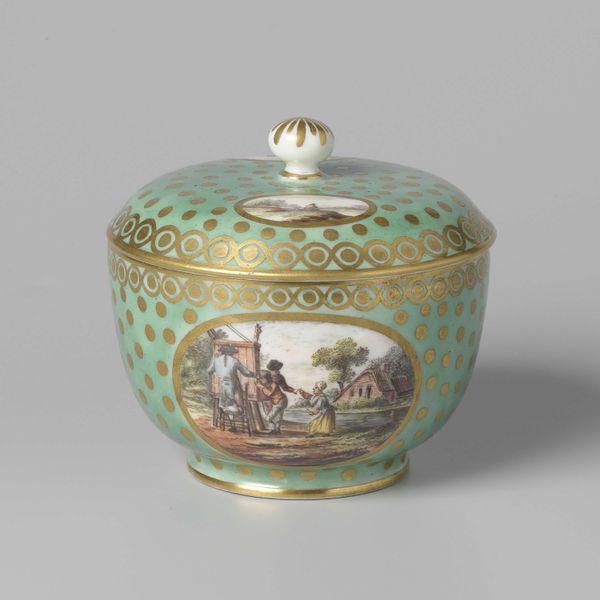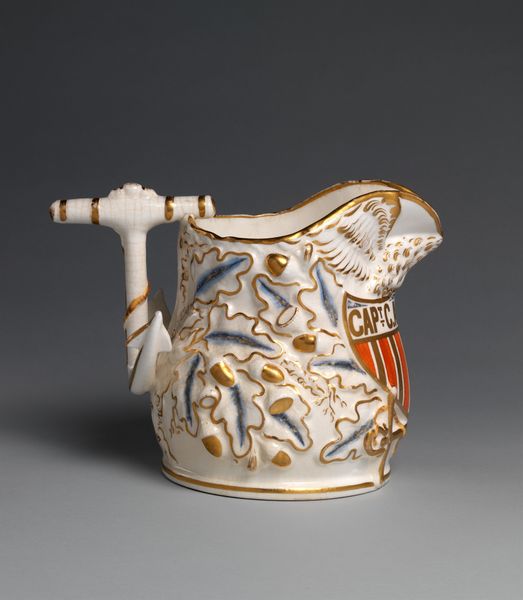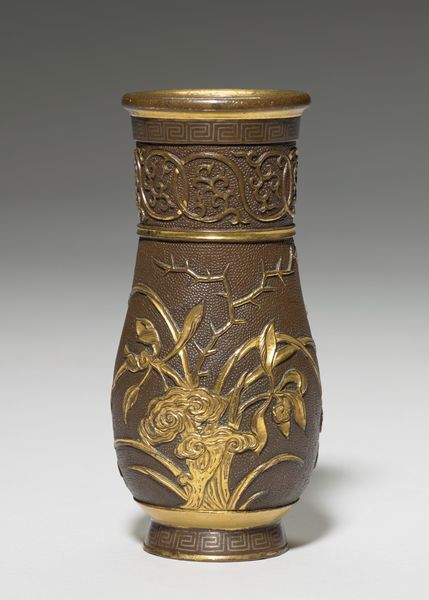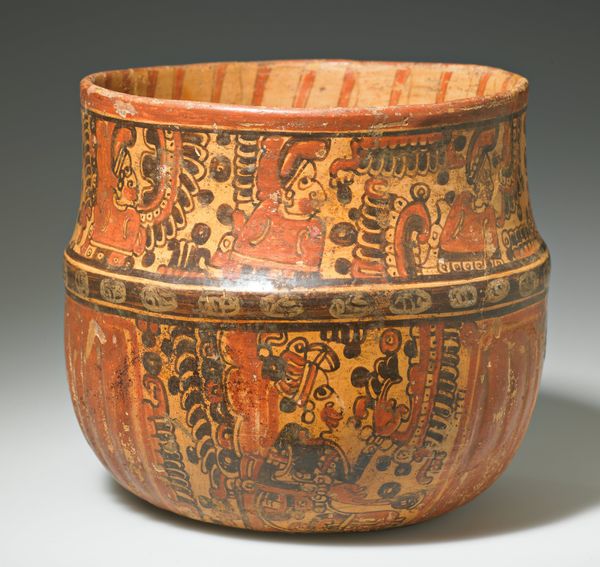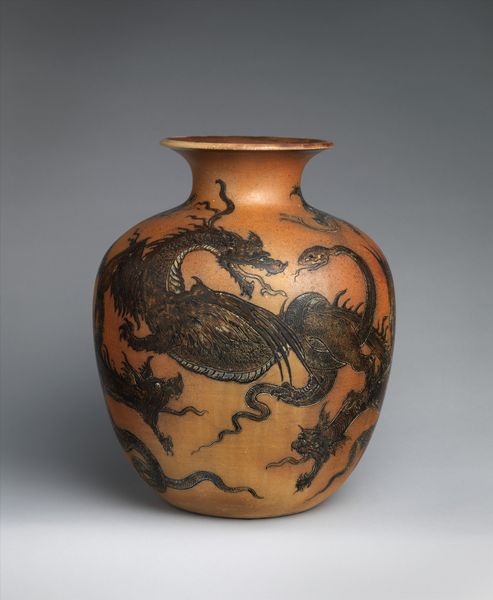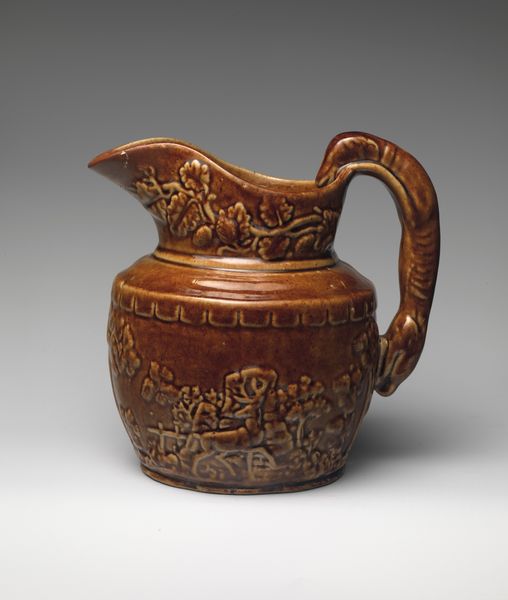
ceramic, sculpture, wood
#
asian-art
#
ceramic
#
stoneware
#
sculpture
#
ceramic
#
wood
#
decorative-art
#
erotic-art
Dimensions: H. (with cover) 13 3/4 in. (34.9 cm); Diam. 16 1/4 in. (41.3 cm)
Copyright: Public Domain
Editor: Here we have Ogata Kōrin's "Coal Container," crafted sometime in the 18th century from ceramic and wood. It has an appealing weightiness to it, emphasized by the repeated stylized cranes. What is your reading of the container? Curator: It's fascinating to consider this object through a materialist lens. "Coal container" feels like a misnomer. Look at the laborious process: carving the wood, shaping the ceramic, the detail work on the cranes. This wasn't merely functional. It speaks more of conspicuous consumption than simple utility. Editor: So you are thinking it was maybe more ornamental than practical? Curator: Precisely! And consider the social context. The labor required points to a patron who could afford specialized artisans. This challenges our typical understanding of "craft" versus "art." Why should we categorize something like this differently than, say, a painting commissioned by the wealthy? Both involve skilled labor, material value, and a social hierarchy of production. Do you think this subverts artistic convention? Editor: I hadn't really thought about it that way, but considering the amount of work required to produce the container, it surely was designed for more than mere coal storage. Was the container intended for the owner or for public appreciation? Curator: Exactly! This object becomes a potent symbol of wealth and power. Analyzing the "Coal Container" through its materiality allows us to see beyond surface aesthetics and question traditional boundaries within art history, shifting to consider labour, resources, and social dynamics in the world that enabled its existence. Editor: This really highlights the blend of artistic expression and the socioeconomic environment in which such decorative containers were produced. Thank you! Curator: And it emphasizes the politics of display as much as that of production, which is essential in how we assess artworks of this era.
Comments
No comments
Be the first to comment and join the conversation on the ultimate creative platform.
